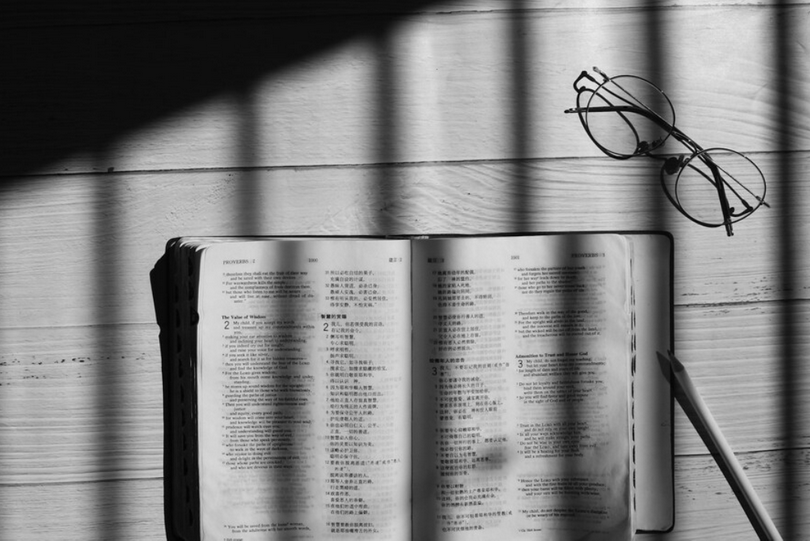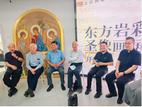From Banned Book to Bestseller: The Bible Mission in Contemporary China by Cynthia Oh. Pasadena: William Carey Publishing, 2024, 248 pages. ISBN-10: 1645085821; ISBN-13: 978-1645085829. Available from Amazon.
Do miracles happen in our time? In From Banned Book to Bestseller: The Bible in Contemporary China, Cynthia Oh resoundingly answers that question by telling the miraculous story of Bible printing in China. Less than sixty years ago, owning a Bible was against the law in China, and citizens found with a Bible could easily be subject to severe punishment. Since that dark time, however, owning a Bible in China has not only become widespread but openly printing Bibles there has become a major achievement. Indeed, since 1987, more than 200 million Bibles have been printed in a country where the Bible was once forbidden. Only God could have brought about the miracle of the Bible becoming a "bestseller" in China.
I was interested in this story because some years ago when I worked on a case study of worship in registered churches in Henan Province, I noticed the prominence of the Bible in worship. Even the benches in the churches I visited included a perch for Bibles, a prop which facilitated referencing the Bible during worship. This prominence of the Bible in worship struck me as a general mark of the Chinese people's love for the printed word, and of Chinese Christians' specific love for God's word. Cynthia Oh's account of the history of the Bible in Chinese history and the astounding growth of the printing and distribution of the Bible in contemporary China has expanded my appreciation for the Chinese church, not to mention God's amazing way of surprising us.
Before telling the central story of the growth of Bible printing in China, Cynthia Oh, a communications manager for the United Bible Societies China Partnership, opens her treatment by laying out a bird's-eye view of the arrival of Christianity during the seventh-century Tang Dynasty and Chinese church history up to the 1950s, when the foreign-mission enterprise in China ended. Then, based on interviews with pastors and lay Christians collected over a ten-year period while crisscrossing China through its burgeoning megapolises, vast heartland, and remote villages, Oh brings the story of the Bible and its growth vividly to life. With its strikingly poignant descriptions of chaos during the Cultural Revolution (1966–1976), chapter two is the most heartrending chapter in the book. Chinese believers provide firsthand accounts of hiding their Bibles, or sometimes destroying them out of fear of severe retribution, and possibly even death. Because they could not open their Bibles for years at a time, many Christians relied on passages committed to memory for meditating on God's word. Other Christians produced handwritten portions of the scriptures, including, in at least one case, the entire Bible. Despite the fear and trembling of this chaotic decade, there is triumph in this account as well. Countless Chinese Christians clung tightly to their faith, celebrating God's mercies in the darkest of times, even in a cesspool, where, as one Chinese brother recounts, he was able to praise God out loud without fear of repercussion.
Following Chairman Mao's death and the rise to power of premier leader Deng Xiaoping in the late 1970s, the fortunes of Chinese Christians began to improve. When the era of the Reform and Opening policy in the 1980s allowed new avenues for participating in society, leaders of the China Christian Council (中国基督教协会) and the Three-Self Patriotic Movement (三自爱国运动) established the Amity Foundation (爱德基金会) in 1985. Protestant leaders founded this church-based charity with the aim of improving the lives of Chinese citizens and those of people around the world. With the government's permission and support, just two years later in October of 1987, the first Bibles began to roll off a press in Nanjing. In the remaining 16 chapters, Oh lays out in great detail the significant challenges and heartening triumphs of this herculean effort to produce and distribute Bibles in China. Along the way, we read the moving stories, hear the touching voices, and see many photos of the diverse Christian brothers and sisters who have engaged in the effort, including lay-Christian "aunties" who struggled on arduous paths peddling their three-wheel carts to deliver cargos of precious Bibles to isolated mountain villages.
A major achievement of this story is the collaboration and partnership between Chinese Christians and churches, but the story also includes collaboration with the Chinese government, local businesses, and with foreign Christians sympathetic to China's need for Bibles. Above all, we read of the tireless zeal of the United Bible Societies (UBS) to put the Bible in the hands of those eager for God's word. Without the willingness, commitment, and perseverance to work together, the story of the growth of the Bible in China would have ended, no doubt, in frustration and disappointment. Instead, the story turns out to be an effort of grace and graciousness that celebrates the many who worked together to make God's word available.
Yet another remarkable aspect of this story is the desire of the Chinese church and the UBS to provide Bibles for everyone in China, even those at the margins of society. With tender sympathy and in considerable detail, Oh depicts the successes in providing Bible translations for some of China's minority peoples, many of whom had never read God's word before in their mother tongue. Through these mother-tongue translation projects, minority cultures have been validated and preserved for members of their younger generations. We can only be amazed, too, by the complicated process to produce and distribute Braille Bibles for the visually impaired. Other initiatives over the years have included scripture-selection publications, literacy efforts, training sessions for lay leaders, children's Bible stories, Catholic Bibles, and Bibles for "house churches." Seeing the need for Bibles in other parts of the world, the Chinese church also began exporting Bibles around the globe, and in Kenya even helping to build a printing press. Of the more than 200 million Bibles printed in China since 1987, more than 100 million have been shipped to various places around the world.
From Banned Book to Bestseller is one long celebration of God's faithfulness to the Chinese church and that church's own passion for God's holy word. In this moving story, we see the grit of Chinese Christians determined to share God's word, their overcoming seemingly insurmountable obstacles, sometimes including working through sensitive partnerships, all in order to share the Word made flesh in Jesus Christ. As I read this book, I was inspired by the simple, dedicated faith and expansive vision of our Chinese brothers and sisters. I heartily recommend this book to anyone who wants to better understand Christianity in contemporary China and to discover a miracle that has truly taken place in our time.
Our thanks to William Carey Publishing for providing a copy of From Banned Book to Bestseller by Cynthia Oh for this review.
Originally from the 'ChinaSource'
CCD reprinted with permission












